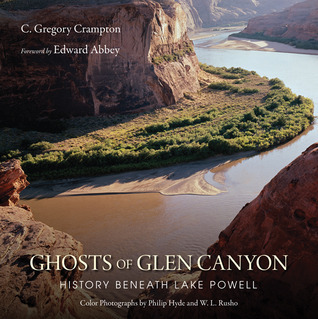
Drift down the Colorado River through Glen Canyon and explore the people and places that encompass the history of this majestic canyon before it drowned in the rising waters of Lake Powell. Author Gregory Crampton led the historical investigations of Glen and San Juan Canyons from 1957 to 1963 under contract with the National Park Service. The objective was to locate and record historical sites that would be lost to the rising waters of the reservoir. This book records that effort. First published in 1986, this edition has been revised to include several new “ghosts” of Glen Canyon, including a never-before-published foreword by Edward Abbey. It also showcases stunning color photographs by Philip Hyde and includes hundreds of black-and-white photographs taken by the original salvage crews. This informative guide to the historic treasures of Glen Canyon includes numbered maps keyed to each location. It is a book for both the armchair traveler and the lake enthusiast eager for a journey through the past to a place few had the privilege to know.
Author

Edward Paul Abbey (1927–1989) was an American author and essayist noted for his advocacy of environmental issues, criticism of public land policies, and anarchist political views. Abbey attended college in New Mexico and then worked as a park ranger and fire lookout for the National Park Service in the Southwest. It was during this time that he developed the relationship with the area’s environment that influenced his writing. During his service, he was in close proximity to the ruins of ancient Native American cultures and saw the expansion and destruction of modern civilization. His love for nature and extreme distrust of the industrial world influenced much of his work and helped garner a cult following. Abbey died on March 14, 1989, due to complications from surgery. He was buried as he had requested: in a sleeping bag—no embalming fluid, no casket. His body was secretly interred in an unmarked grave in southern Arizona.